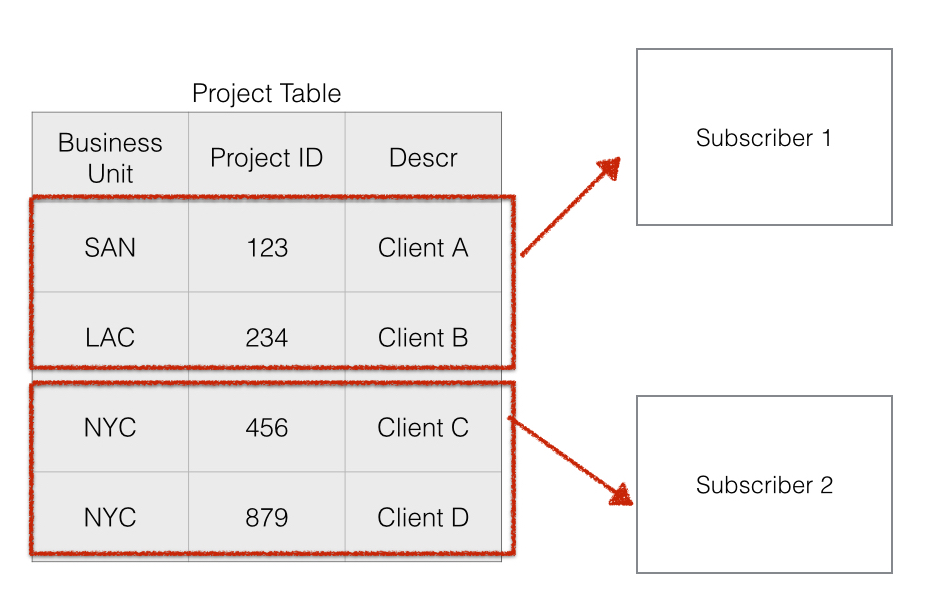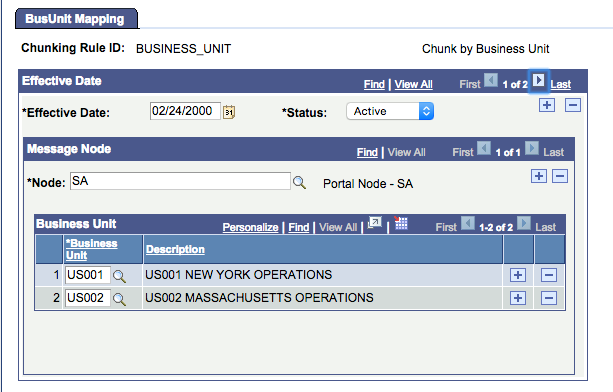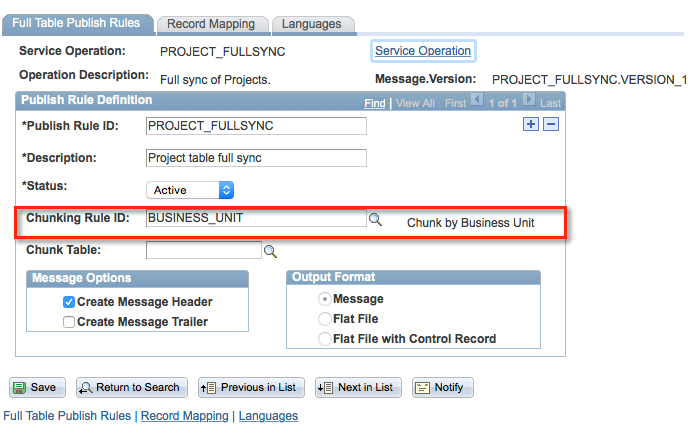What are FULLSYNC Chunking Rules?
By Chris Malek | Tue, Jul 7, 2015
In this post we will look at the delivered “chunking” rules for FULLSYNC service operations. The chunking rules allow you to configure which sets of data should be sent to what integration nodes. It is common in large corporations or institutions to have a central Finance database that may be the source of truth for accounting data and setups. However, there could be many different supporting systems or business units that the central finance database integrates with. Since the finance database may have the “global” setup values it may not always be appropriate to send an entire setup table to some other system using a FULLSYNC. The other subscribing system may only care about a subset of the data.
Here is a high level schematic that represents two systems that only care about subsets of business units in the project table. Here we have two subscribing systems that receive Project setup data. Each subscriber only cares about certain business units.

Using the FULLSYNC service operations and infrastructure which I have documented in How to FULLSYNC tables between PeopleSoft databases, there is a delivered way with only configuration to limit what data is send to each node using “chunking rules.”
- We assume that each subscriber has a unique integration broker node name in the database running the fullsync publication.
- We assume that you want to partition the data by either SETID or BUSINESS_UNIT. (We will document BUSINESS_UNIT in this post).
First you need to map what node should receive what business unit. You can do that at this navigation:
Enterprise Components > Integration Definitions > Map Chunking Rules > Business Units
In this screenshot, we are sending the “SA” node two different business units. Any other business units that may exist in the source database will not be sent to the “SA” node.

After you setup your node to BUSINESS_UNIT mapping, you then have to configure that chunking rule on the FULLSYNC.
That is done here:
Enterprise Components > Integration Definitions > Full Data Publish Rules.

When the FULLSYNC runs, there has to be an service operation active routing to the node in the chunking rule or it will not publish outbound.
You can also setup SETID chunking rules as well.
Additional Reading
Article Categories
Chris Malek
Chris Malek is a PeopleTools® Technical Consultant with two decades of experience working on PeopleSoft enterprise software projects. He is available for consulting engagements.
About Chris Work with ChrisPeopleSoft Simple Web Services (SWS)
Introducing a small but powerful PeopleSoft bolt-on that makes web services very easy. If you have a SQL statement, you can turn that into a web service in PeopleSoft in a few minutes.
Integration Broker - The Missing Manual
I am in the process of writing a book called "Integration Broker - The Missing Manual" that you can read online.